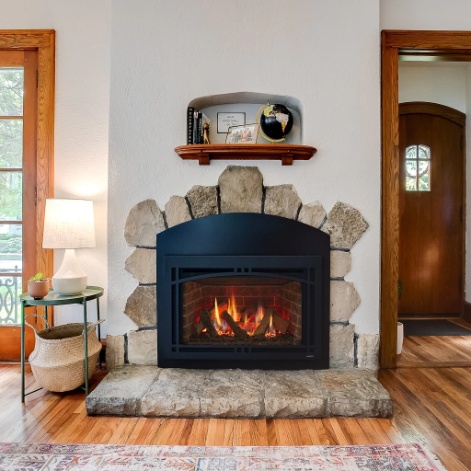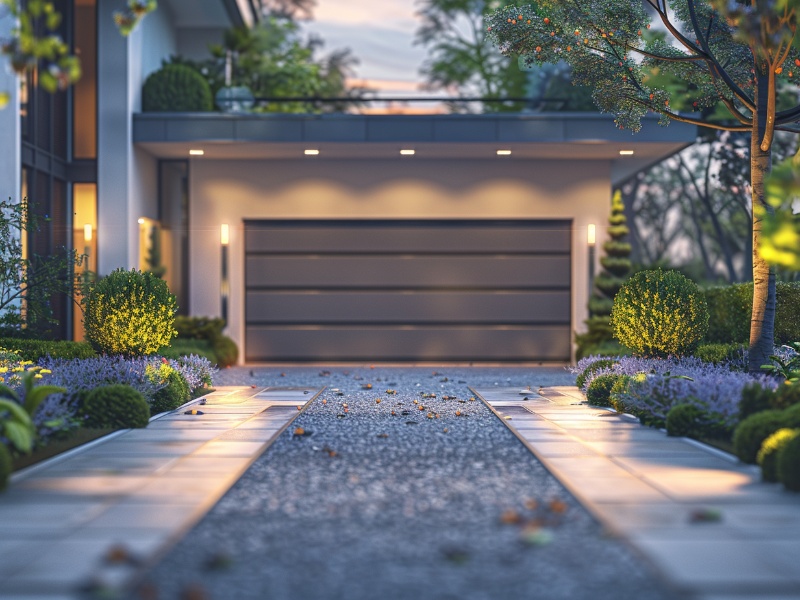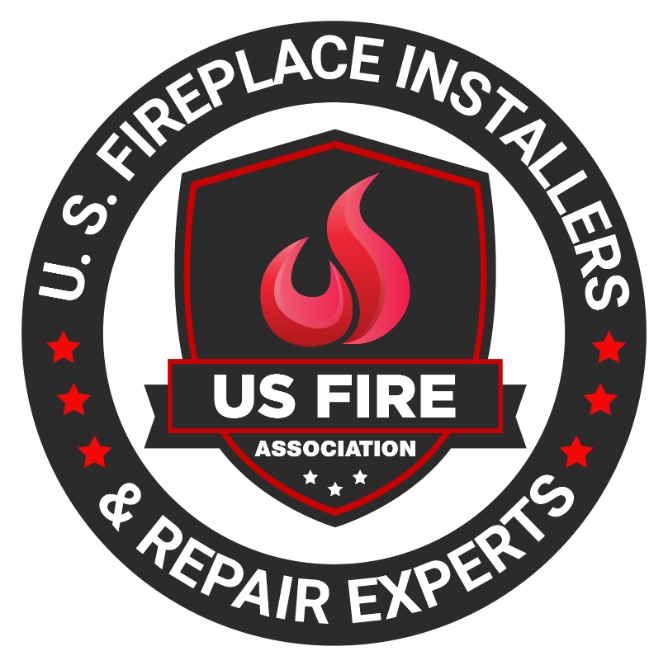Table of Contents
Considering adding a fireplace to your home but unsure about how much you should spend on it?
Explore the different types of fireplaces available, factors to consider when choosing one, and the costs associated with each type in this comprehensive guide.
We break down the installation, maintenance, and fuel costs of wood-burning, gas, and electric fireplaces to help you make an informed decision.
Discover tips on saving money and determining how much you should spend on your new fireplace.
Types of Fireplaces
When it comes to fireplaces, there are various types to choose from to suit your home decor and heating needs. The options range from modern electric fireplaces to traditional wood-burning ones, each offering a unique ambiance and style.
Wood-burning Fireplaces
Wood-burning fireplaces offer a traditional and cozy heat source, adding a classic touch to any room with their mantels and hearths.
The crackling sound of burning wood in a fireplace can create a serene ambiance that promotes relaxation and a sense of nostalgia. The mantel above a wood-burning fireplace serves as a focal point for displaying family photos, artwork, or seasonal decorations, adding a personalized touch to the room’s decor.
The hearth provides a cozy spot for family and friends to gather around, sharing stories and creating cherished memories. The overall warmth and comfort provided by a wood-burning fireplace make it a timeless feature that enhances the charm of any living space.
Gas Fireplaces
Gas fireplaces are a modern and efficient heating system that eliminates the need for a traditional chimney and reduces maintenance requirements.
These contemporary heating units not only provide warmth and ambiance to a space, but their sleek and stylish designs also add a touch of sophistication to any room. With advancements in gas fireplace technology, they are now equipped with excellent heating capabilities that can efficiently heat a room while consuming less energy compared to traditional wood-burning fireplaces. In addition, gas fireplaces require minimal upkeep, making them a convenient option for homeowners seeking both comfort and ease of maintenance.
Electric Fireplaces
Electric fireplaces provide energy-efficient heating solutions and create a cozy ambiance with added accessories like mantels and surrounds.
These fireplaces offer a convenient way to enjoy the warmth and charm of a traditional fireplace without the hassle of maintenance or cleanup. With various flame settings and temperature controls, users can easily customize their heating experience to suit their preferences. Electric fireplaces come in a wide range of styles, from sleek modern designs to classic mantelpieces, allowing homeowners to complement their decor and create a focal point in any room. The availability of accessories such as log sets, decorative screens, and remote controls further enhance the functionality and aesthetic appeal of electric fireplaces.
Factors to Consider When Choosing a Fireplace
Choosing the right fireplace involves considering factors such as your budget, the size and location of the fireplace in your home, its heating efficiency, maintenance requirements, and the initial installation costs.
Budget
Setting a budget for your fireplace project is crucial to manage costs effectively and ensure a valuable investment with a good return on investment.
Estimating the expenses involved in fireplace installation can help you make informed financial decisions. By carefully planning your budget, you can avoid overspending and prioritize where to allocate your funds. Understanding the costs associated with materials, labor, and any additional features will give you a realistic view of the financial commitment required.
Creating a detailed budget allows you to evaluate the potential return on investment, enhancing the long-term value of your home.
Size and Location
Determining the size and location of your fireplace is essential to ensure it complements the aesthetics of your space and provides the desired cozy ambiance, whether in the living room, bedroom, or outdoor patio.
The dimensions of the fireplace should be proportionate to the room size to avoid overpowering or being too small. In a spacious living room, a large fireplace can serve as a focal point, while a smaller bedroom may benefit from a more compact design.
Consider how the fireplace design aligns with the overall decor style – a sleek, modern fireplace may suit a contemporary living room, whereas a rustic stone fireplace could add charm to an outdoor patio.
Strategic placement, such as positioning the fireplace against a wall or in a corner, can maximize space utilization and enhance the cozy atmosphere.
Heating Efficiency
Ensuring the heating efficiency of your fireplace is crucial, especially in cold climates, to maximize energy efficiency and provide optimal comfort.
When the heating system of your fireplace operates efficiently, it not only helps in lowering energy costs but also ensures that your living space remains warm and cozy during the chilly winter months.
A well-functioning fireplace that efficiently distributes heat can be a game-changer, offering a reliable source of warmth while reducing the burden on primary heating systems. This enhanced heating capability not only enhances the comfort of your home but also contributes to a more sustainable and energy-efficient living environment.
Maintenance and Installation Costs
Considering maintenance and installation costs is essential when choosing a fireplace, as it may involve hiring a professional contractor, obtaining permits, and ensuring compliance with safety regulations.
Professional services play a crucial role in ensuring that the fireplace is installed correctly and functions efficiently over time. A qualified contractor can handle the technical aspects of the installation process, such as venting requirements and proper clearances, which are essential for safety and performance. Securing construction permits is vital to meet building codes and regulations, thereby averting potential legal issues. Prioritizing safety measures during installation not only safeguards against hazards but also prolongs the lifespan of the fireplace, minimizing the need for costly repairs down the line.
How Much Does a Fireplace Cost?
The cost of a fireplace can vary depending on the type chosen and the specific features desired. It is recommended to gather estimates, compare prices, and consult with professionals to determine the overall expenses.
Wood-burning Fireplaces
Wood-burning fireplaces can have varying costs based on the materials used, labor involved in construction, and the overall quality of the installation.
The choice of materials such as the type of wood, bricks, or stone can significantly impact the total expense.
Labor costs can vary depending on the complexity of the design and the experience of the workers.
Investing in high-quality installation can ensure longevity and safety, but it might come with a higher upfront cost.
When estimating the total expenses, it is crucial to factor in not just the initial investment but also potential long-term savings in energy efficiency and maintenance.
Gas Fireplaces
The cost of gas fireplaces may include expenses for installation, the purchase price of the unit, and potentially a warranty for the product.
Installation expenses for gas fireplaces can vary depending on the complexity of the setup, with factors like venting requirements and the need for professional labor influencing costs.
Unit prices for gas fireplaces range from affordable options for basic models to higher-end designs with premium features, catering to various budget preferences.
Considering the value of warranties is crucial as they can provide coverage for repairs or replacements, enhancing the long-term investment benefits of owning a gas fireplace.
Electric Fireplaces
Electric fireplaces typically have upfront costs for the unit, installation expenses, and the option for additional insurance coverage for added peace of mind.
Customers often find that the initial cost of purchasing an electric fireplace unit varies depending on factors like size, design, and features. Installation fees can also fluctuate based on the complexity of the setup and whether professional assistance is required. Some homeowners opt to include insurance coverage with their electric fireplace purchase to safeguard against any unforeseen damages or malfunctions. Reading customer reviews can provide valuable insights into the overall cost-effectiveness and satisfaction levels of different electric fireplace models.
Additional Costs to Consider
In addition to the main fireplace costs, there are extra expenses to consider such as chimney sweeping and regular maintenance, fuel costs for operation, installation of additional accessories for added luxury, and comfort.
Chimney Sweeping and Maintenance
Regular chimney sweeping and maintenance are essential for the long-term upkeep of a fireplace and can help reduce maintenance costs over time, although some tasks may be manageable through DIY efforts.
It’s crucial to schedule regular inspections and cleanings to ensure efficient operation and safety. Neglecting chimney maintenance can lead to creosote buildup, which is a fire hazard. By performing simple tasks like clearing debris from the flue and inspecting the chimney cap for damage, homeowners can prevent costly repairs down the line. DIY chimney maintenance not only saves money but also promotes a healthier and safer indoor environment. Homeowners should also invest in chimney caps to keep out wildlife and debris, further protecting the chimney and fireplace system.
Fuel Costs
Fuel costs are a significant consideration for fireplace owners, especially in cold climates, where choosing between wood and gas can impact heating efficiency and operating expenses.
Factors such as the availability and price of wood or natural gas in a particular region play a crucial role in determining the overall expense of running a fireplace. For instance, in areas where wood is abundant and affordable, opting for a wood-burning fireplace may initially seem cost-effective. Gas fireplaces are known for their higher heating efficiency, which can translate to long-term savings on fuel costs.
The convenience of using gas as a fuel source might outweigh the price difference for some homeowners, leading them to prioritize ease of use over initial expenses.
Installation Costs
Professional installation costs for fireplaces can vary based on the contractor’s quality of work, the specific requirements of the project, and any warranties offered for the installation.
Hiring a professional for fireplace installation is crucial to ensure the job is done right the first time. Professionals have the expertise to handle different types of fireplaces and can suggest the best options for your specific needs.
When considering costs, it’s important to obtain multiple quotes from different contractors to compare prices and services offered. Understanding the warranty options provided by each contractor is essential in protecting your investment.
Opting for quality workmanship may initially seem like a higher cost, but it can save you money in the long run by avoiding potential issues and ensuring a safe and efficient fireplace installation.
Tips for Saving Money on a Fireplace
To optimize your fireplace investment, consider money-saving tips such as researching different options, seeking expert advice, and making informed decisions based on careful consultation and comparisons.
One practical strategy to save costs on your fireplace project is to explore various budget-friendly alternatives before making a final decision. By comparing different materials, designs, and installation methods, you can find cost-effective solutions without compromising quality. Scheduling consultations with fireplace specialists can help you gain valuable insights and recommendations on the most efficient and affordable choices for your specific needs. Remember, a well-informed approach and diligent research can lead to significant savings and a successful fireplace project.
Frequently Asked Questions
1. How much should I spend on my new fireplace?
The amount to spend on a new fireplace depends on the type you choose, the features you desire, and the cost of installation and maintenance. Budgets can range widely from a few hundred for a simple electric model to several thousand for a high-end gas or wood-burning fireplace with custom designs.
2. What are the different types of fireplaces available?
There are three main types of fireplaces: wood-burning, gas, and electric. Wood-burning fireplaces offer a traditional look and feel, gas fireplaces are convenient and clean, and electric fireplaces are flexible and generally the most economical.
3. What factors should I consider when choosing a fireplace?
Consider your budget, the desired heating efficiency, maintenance requirements, and the installation costs. Also think about the size and location of the fireplace in your home to ensure it fits well and complements the space.
4. What are the average costs of different types of fireplaces?
Wood-burning fireplaces typically cost between $1,500 and $5,000, gas fireplaces range from $2,000 to $4,000, and electric fireplaces can vary from $200 to $2,000, excluding installation and additional features.
5. What additional costs are associated with owning a fireplace?
Beyond the purchase and installation, consider ongoing fuel costs for wood or gas, annual maintenance like chimney cleaning for wood-burning models, and potential repairs. Electric fireplaces usually have lower maintenance costs.
6. How can I save money when purchasing a fireplace?
To save money, compare different types and brands for price and efficiency, look for seasonal discounts, and consider modern electric fireplaces for lower installation and maintenance costs. Opting for a less complex installation can also reduce expenses.
Latest Articles

What Is An NG (Natural Gas) Indicator And Why You Need It For Your Fireplace
Table of Contents1 Understanding Natural Gas Fireplaces2 What is an NG Indicator?3 Importance of NG Indicators for Safety4 Types of NG Indicators5 Installation and Maintenance of NG Indicators6 Signs of a Faulty NG Indicator7 Frequently Asked Questions Natural gas fireplaces are a favored option among numerous homeowners due to their convenience and effectiveness. But, what is an NG (Natural Gas) indicator and why you need it for your fireplace? It is imperative to comprehend how they function and the significance of having an NG (Natural Gas) indicator for safety purposes. This article delves into the definition and significance of NG indicators. We will discuss the potential hazards associated with the absence of one and the various types of indicators accessible. Also, we will discuss installation and maintenance recommendations, and methods to recognize and rectify issues with malfunctioning indicators. Stay well-informed and ensure the safety of your home by referring to this exhaustive guide. Understanding Natural Gas Fireplaces Natural gas fireplaces serve as an efficient and convenient heating option for numerous households. They utilize natural gas as a fuel source to deliver consistent warmth and ambiance. How They Work and Why They Need NG Indicators The operation of natural gas fireplaces involves igniting natural gas to generate heat. This process requires diligent monitoring to ensure both safety and efficiency, a task facilitated by the use of NG indicators. NG indicators play a critical role in detecting potential gas leaks. They enable residents to promptly address and mitigate any associated hazards. Through continuous monitoring of gas levels and providing timely warnings and alerts, NG indicators uphold a secure indoor environment. It is imperative to ensure that these indicators function properly to facilitate the effective operation of natural gas fireplaces. This helps mitigate the inherent risks linked to gas leaks. What is an NG Indicator? An NG indicator is a specialized device equipped with advanced sensors and technology. It is specifically designed to detect natural gas leaks and monitor gas pressure in appliances, such as fireplaces. Definition and Purpose The NG indicator functions as a detector that monitors gas appliances for potential leaks. It provides essential functionality to ensure safety in households utilizing natural gas. These detectors play a crucial role in protecting residences by notifying occupants of dangerous gas leaks long before they escalate into perilous situations. Through continuous monitoring of gas levels in the vicinity, NG indicators offer an additional layer of protection. This is particularly important in properties that rely on gas-operated fireplaces or stoves. These devices not only help avert potential disasters but also enhance the overall peace of mind of homeowners. They assure them that their living spaces are equipped with reliable safety features. Importance of NG Indicators for Safety Natural gas indicators are essential for maintaining safety in households equipped with natural gas appliances. These devices serve as a proactive measure to promptly detect gas leaks. This offers homeowners a sense of security and assurance. Potential Dangers of Not Having an NG Indicator The absence of an NG indicator in residences equipped with natural gas appliances can pose significant hazards. This includes the risk of undetected gas leaks , carbon monoxide poisoning , and pilot outages that may lead to dangerous situations. These potential risks can profoundly impact indoor air quality. They directly influence the health and safety of individuals residing in the household. Undetected gas leaks can go unnoticed, gradually permeating the air and creating a potentially explosive environment. Insufficient ventilation from undetected exposure to carbon monoxide can lead to serious health complications. These range from mild symptoms such as dizziness to fatal poisoning. Without proper monitoring from an NG indicator, families are left susceptible to these concealed threats. This underscores the critical importance of implementing proactive measures to mitigate such risks. Types of NG Indicators Indicators for Natural Gas (NG) are available in diverse types. Each presents distinct detection capabilities tailored to specific requirements, encompassing both manual and automated alternatives. Manual vs. Automatic Indicators Manual NG indicators require user intervention for monitoring gas levels and identifying leaks. On the other hand, automatic indicators employ sophisticated technology to deliver continuous, real-time monitoring. This heightened efficiency and oversight enhance safety protocols. Conventional manual indicators rely on individuals to physically inspect and evaluate gas levels periodically. This renders them more susceptible to human errors. Conversely, automatic indicators feature sensors capable of promptly detecting even the most minute fluctuations in gas levels. This establishes a more dependable and precise monitoring mechanism. Automatic indicators can activate alerts and shut-off systems upon detecting a leak. This ensures immediate action to avert potential hazards. This advanced technology enhances safety protocols and instills a sense of command and assurance among users. Installation and Maintenance of NG Indicators The reliable and accurate performance of NG indicators necessitates proper installation and consistent maintenance. This often entails professional installation and adherence to recommended service guidelines. Proper Installation and Regular Maintenance Tips The proper installation of NG indicators involves adhering to the specifications in the user manual. Maintenance protocols entail strict adherence to a predetermined maintenance schedule to ensure sustained operational efficiency. During the installation phase, it is imperative to verify that the NG indicators are securely affixed in the designated location as stipulated by the manufacturer. Crucial steps include confirming power source compatibility and ensuring proper grounding of the device to optimize performance. Calibration of the indicator must be executed meticulously to ensure precise readings. Regarding maintenance, essential practices include regular inspection for signs of wear, thorough cleaning of the indicator components, and routine functionality tests. By allocating time to a consistent maintenance regimen, the NG indicator can operate with optimal efficiency over an extended duration. Signs of a Faulty NG Indicator Recognizing indicators of a malfunctioning NG indicator is essential for upholding safety and performance standards. Inaccuracies and detection issues can undermine the efficacy of these devices. Identifying and Addressing Issues The process of identifying and addressing issues related to NG (natural gas) indicators requires a systematic troubleshooting approach. This ensures their optimal performance

What You Need To Know About Gas Log Set Safety And Installation Considerations
Table of Contents1 Understanding Gas Log Sets2 Safety Considerations for Gas Log Sets3 Installation Guidelines for Gas Log Sets4 Maintaining and Troubleshooting Gas Log Sets5 Frequently Asked Questions Gas log sets are a favored option among homeowners seeking to enjoy the comfort and atmosphere of a conventional fireplace without the inconvenience of wood. This article tells you what you need to know about gas log set safety and installation considerations. Before incorporating one into your residence, it is imperative to understand the safety considerations associated with their use. This discussion delves into the potential hazards linked with gas log sets. It presents crucial precautions to uphold the safety of your home. Also, it outlines proper installation procedures and offers insight into common errors to avoid. Finally, it provides advice on maintenance and troubleshooting. Gain comprehensive knowledge on gas log set safety and installation considerations. Understanding Gas Log Sets Comprehending gas log sets is essential for individuals seeking to elevate their fireplace experience, and for gas lag set safety and installation. These heating appliances can operate on either natural gas or propane. In addition, they are available in a range of styles, including vented, ventless, and vent-free options. They provide an array of benefits and customization opportunities through various fireplace accessories. What are Gas Log Sets? Gas log sets are meticulously crafted artificial logs. They are designed to imitate the appearance and functionality of authentic wood logs within fireplaces. These gas log sets typically consist of ceramic or refractory concrete logs that have been skillfully molded and painted. This allows them to replicate the natural grain and texture of real wood. The logs are arranged in various configurations within the fireplace. They establish a realistic and welcoming ambiance. In addition to the logs, gas log sets often include fireplace accessories such as glowing embers. Accessories also include decorative stones, and even pine cones to enhance the overall aesthetic appeal. Homeowners can select from an array of placement options. These include traditional wood stack, cascading driftwood, or a contemporary geometric arrangement. Homeowners can align their preferred style and design preferences. Safety Considerations for Gas Log Sets Safety considerations for gas log sets are of utmost importance to guarantee a secure and pleasant fireplace experience. It is essential to address potential hazards such as carbon monoxide exposure, gas leaks, and fire safety to maintain a safe environment for homeowners. Potential Hazards and Precautions Gas log sets come with potential hazards that must be taken seriously, including the risks of gas leaks, carbon monoxide poisoning, and fire incidents. It is imperative to establish and adhere to rigorous safety measures to ensure the well-being of individuals and properties involved in the use of gas log sets. Gas leaks represent a significant hazard when utilizing gas log sets. They can result in the accumulation of combustible gas within the premises, heightening the possibility of explosions or fires. Carbon monoxide, an insidious gas generated during incomplete combustion, poses a grave threat due to its colorless and odorless nature, making it undetectable without proper monitoring. To address these risks effectively, it is vital to install carbon monoxide detectors and gas leak sensors in the vicinity of the gas logs. Routine maintenance checks on the gas log system, including cleaning and inspection procedures, are critical to ensure safe operations and the prompt identification of potential issues. In case of a gas leak or suspected presence of carbon monoxide, immediate evacuation of the affected area is paramount, followed by prompt contact with emergency services. Recognizing the distinct odor of rotten eggs associated with natural gas can serve as an early warning sign, prompting swift actions to avert any potential accidents. Installation Guidelines for Gas Log Sets The installation of a gas log set necessitates meticulous planning and strict adherence to specific guidelines. This includes verifying a secure gas connection, ensuring proper gas lines are in place, and complying with local building codes. Often, the complexity of these requirements may require the expertise of a certified technician. Proper Installation Techniques The appropriate installation procedures for gas log sets involve the secure connection of gas lines, meticulous adherence to installation manuals, and strict compliance with local building codes. It is imperative to prioritize the guarantee of secure gas connections to avert leaks and potential safety hazards. During the installation of gas log sets, utilizing suitable sealants and fittings is essential to establish a tightly sealed connection. The correct installation of gas lines is critical for both the safety and operational efficacy of the gas log set. Reference to the installation manual is highly advisable for detailed, step-by-step guidance to prevent inaccuracies and ensure the successful establishment of the gas log set. Consistently adhering to building codes and regulations upholds safety standards. Seeking guidance and confirmation from a certified technician before and after installation can offer invaluable support and assurance throughout the process. Common Installation Mistakes to Avoid It is imperative to avoid common installation errors to ensure the secure and effective operation of gas log sets. This includes verifying proper gas connections and compliance with building codes. Improper gas connections can result in leaks and potential hazards, underscoring the importance of verifying the tightness and correct alignment of all fittings. Failure to adhere to building codes can lead to structural complications, penalties for non-compliance, or even safety concerns. To prevent these oversights, it is advised to consult the manufacturer’s installation guidelines and strictly adhere to local regulations. Engaging a certified technician for the installation of gas log sets guarantees that the procedure is carried out accurately and securely. This provides assurance that the system is functioning as intended. Maintaining and Troubleshooting Gas Log Sets Regular maintenance and troubleshooting of gas log sets are imperative to uphold their optimal performance and safety. This includes thorough examination of the pilot light, pilot assembly, and other gas appliances to preserve heating efficiency and promptly resolve any arising issues. Tips for Maintenance and Repair Ensuring the proper maintenance of your gas log set necessitates conducting

Key Considerations For Using Compressed Liquid Propane In Fireplace Installation
Table of Contents1 What is Compressed Liquid Propane?2 Benefits of Using Compressed Liquid Propane in Fireplaces3 Safety Precautions for Installing Compressed Liquid Propane Fireplaces4 Installation Process for Compressed Liquid Propane Fireplaces5 Maintenance and Care for Compressed Liquid Propane Fireplaces6 Alternative Fuel Options for Fireplaces7 Frequently Asked Questions If you are contemplating the use of compressed liquid propane in your fireplace installation, this discussion will delve into the advantages of adopting this alternative fuel option. These benefits include enhanced efficiency, cost savings, and important safety precautions to consider. Furthermore, a detailed step-by-step guide on the installation process will be provided, along with recommendations for maintenance and care. A comparison of various fuel options for fireplaces will also be conducted to assist you in making an informed decision. We encourage you to stay engaged to gain insights into optimizing your fireplace’s capabilities with compressed liquid propane. What is Compressed Liquid Propane? Compressed Liquid Propane is a versatile energy source contained in a high-pressure propane tank. It finds extensive utility in both residential and commercial settings, prominently including fireplaces. Recognized for its convenience and efficiency, Compressed Liquid Propane emerges as a favored option for heating residential spaces and facilitating culinary pursuits across various environments. Additionally, it serves as a viable fuel substitute in vehicular contexts, portable cooktops, and outdoor grilling scenarios due to its propensity for clean combustion. The attribute of portability, coupled with ease of storage, positions Compressed Liquid Propane as an optimal energy source for individuals residing off the conventional grid. It is also great for engaging in outdoor activities such as camping and recreational vehicle (RV) travel. Moreover, the high energy density inherent to Compressed Liquid Propane renders it a dependable choice for sustaining generators during instances of power disruptions. Benefits of Using Compressed Liquid Propane in Fireplaces Utilizing Compressed Liquid Propane for fireplace installation presents several benefits. These include enhanced fuel efficiency, convenience, cost-effectiveness, and a favorable environmental footprint. These attributes render it a recommended option for heating solutions, applicable to both on-grid and off-grid settings. Efficiency and Cost Savings The utilization of Compressed Liquid Propane in fireplaces offers significant advantages, notably in terms of high fuel efficiency and cost-effectiveness. These attributes are underscored by the exceptional BTU rating and overall heating efficiency of Compressed Liquid Propane. The elevated fuel efficiency exhibited by Compressed Liquid Propane fireplaces necessitates less fuel to generate the same level of heat compared to traditional wood-burning fireplaces or electric heating systems. Consequently, homeowners can realize cost savings on their heating expenditures over an extended period. Moreover, the clean-burning characteristics of propane minimize maintenance costs linked to soot and ash cleanup. This further enhances the cost-effectiveness of employing propane fireplaces. Safety Precautions for Installing Compressed Liquid Propane Fireplaces Ensuring safety is of utmost importance during the installation of Compressed Liquid Propane fireplaces. This requires strict adherence to safety regulations, meticulous attention to proper ventilation requirements, careful control of ignition sources, and the incorporation of carbon monoxide and gas leak detection systems. Important Safety Measures Essential safety protocols for the installation of Compressed Liquid Propane fireplaces encompass adherence to fire safety regulations. Engaging in professional assessments and employing sophisticated gas leak and carbon monoxide detection mechanisms is crucial. Professional evaluations play a critical role in identifying any prospective hazards or irregularities within the fireplace infrastructure. These assessments are vital in ensuring the operational integrity of all components and compliance with safety protocols. Routine inspections serve to forestall potential fire incidents, gas discharges, or carbon monoxide emissions that could pose significant threats to both the property and individuals in the vicinity. The utilization of advanced gas leak and carbon monoxide detection systems serves as an additional safeguard by promptly notifying occupants of any elevated levels of these hazardous gases. Installation Process for Compressed Liquid Propane Fireplaces The installation procedure for Compressed Liquid Propane fireplaces encompasses several critical steps. These include: Adhering to installation guidelines Correctly positioning the propane tank Ensuring precise gas line installation Optimizing heat output Monitoring pressure regulation Establishing the pilot light Step-by-Step Guide The installation process of Compressed Liquid Propane fireplaces involves a systematic approach. This begins with the construction of the firebox, followed by the installation of the gas control valve, setup of the ignition system, design of the flue, and verification of a suitable combustion air supply. The construction of the firebox assumes critical importance as it serves as the foundation of the fireplace structure. It securely holds the combustible materials in place. Subsequently, the gas control valve plays a key role in managing the propane flow, guaranteeing safe and efficient operation. The installation of the ignition system facilitates convenient and reliable fire initiation. Designing the flue is a necessary step to direct exhaust gases outside, thus preventing their accumulation indoors. Moreover, ensuring a proper combustion air supply is essential to sustain optimal burning conditions and enhance fuel consumption efficiency. Each component contributes significantly to the functionality and safety of the fireplace installation process. This underscores the importance of meticulous attention to detail and adherence to established protocols. Maintenance and Care for Compressed Liquid Propane Fireplaces Consistent maintenance and attention to Compressed Liquid Propane fireplaces are imperative to guarantee their optimal functionality. This includes adherence to prescribed maintenance protocols, regular chimney upkeep, prevention of soot accumulation, and scheduling of routine propane deliveries and professional inspections. Tips for Keeping Your Fireplace in Good Condition For the maintenance of your Compressed Liquid Propane fireplace, it is essential to conduct regular checks on ignition sources. Monitor flame appearance, clean the gas burner and pilot assembly, and verify the correct operation of the safety shut-off valve. The inspection of ignition sources requires a detailed examination of the electronic igniter. This helps identify any signs of damage or corrosion and ensures proper sparking upon activation. Monitoring flame appearance involves observing a consistent blue flame with minimal flickering, which signifies efficient combustion. Cleaning the gas burner and pilot assembly can be performed using a soft brush or compressed air to eliminate any dirt or debris that may
